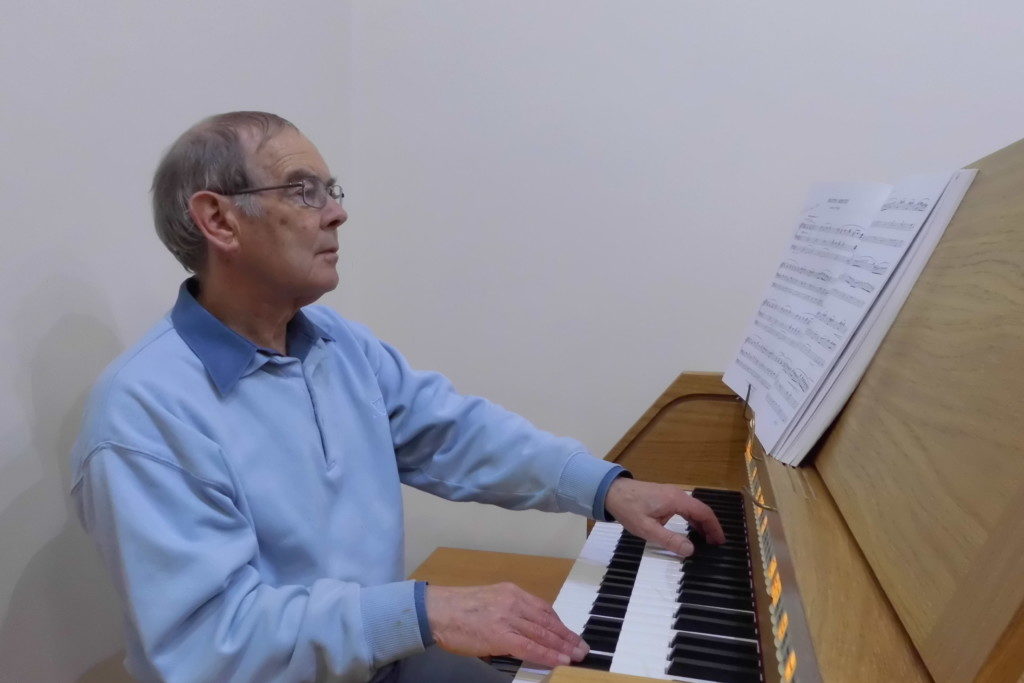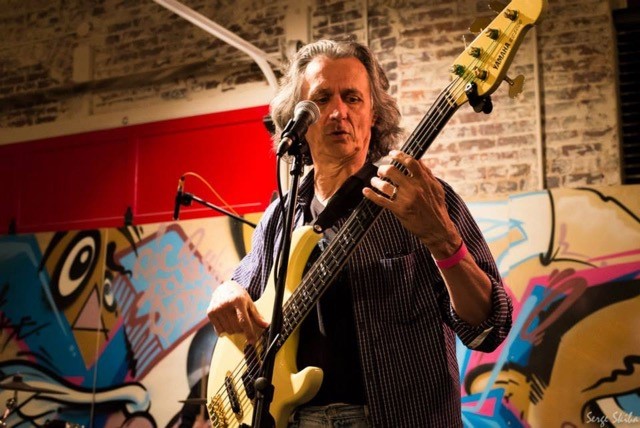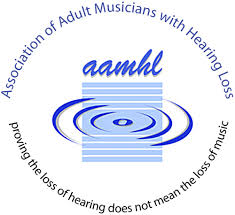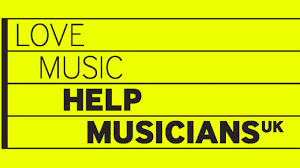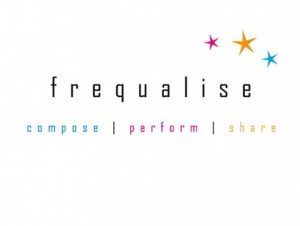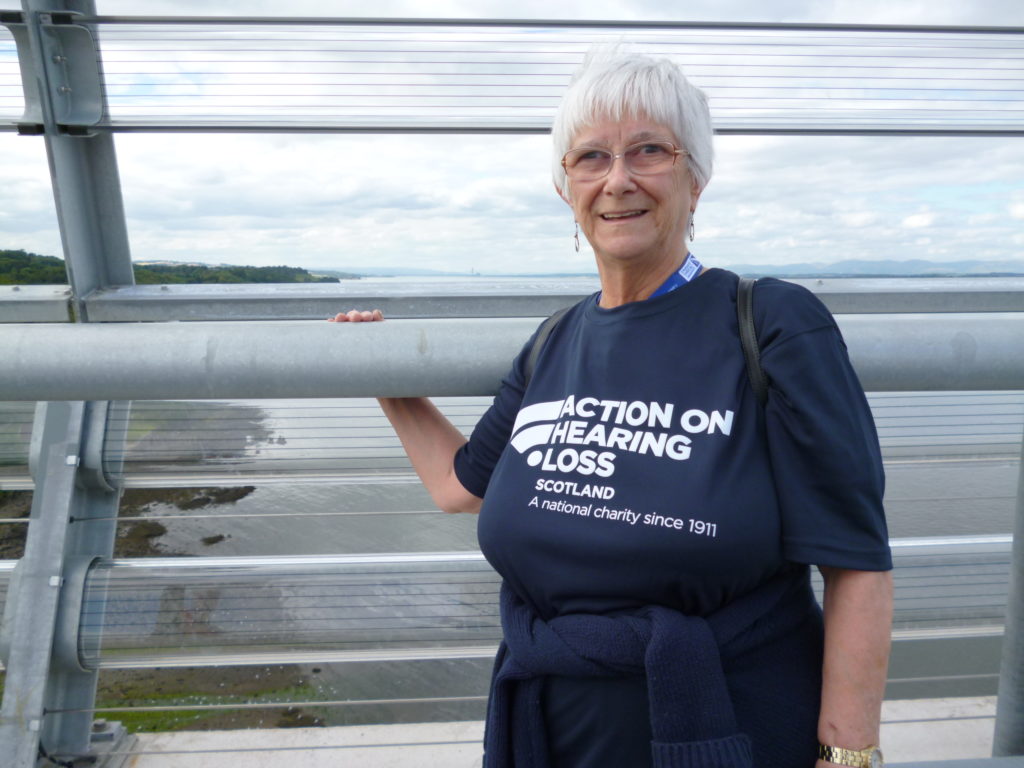
Photo: Hilary Rae walking the new Forth Bridge in 2017
MY EXPERIENCE OF MUSIC AND DEAFNESS
“When I was at school, I was in the junior and senior choirs and played the violin in the orchestra. After I left, I continued to play in an amateur orchestra, and sang in various choirs. I also taught myself the guitar, and played in the church music group.
“When I retired in 1997, I was beginning to lose my hearing. I could not hear my colleagues speaking to me across the office. It got progressively worse and I will never forget the night I went with friends to a performance of Handel’s Messiah armed with a score. To my dismay, I found I could not follow it! I was shocked!
“In 1998 I got one NHS analogue hearing aid for my right ear. In 2001 I went to a private audiologist. She said I had bilateral high frequency sensorineural hearing loss, greater in my left ear than the right. She gave me two digital aids, which were a big improvement.
“I soon found I could not tune my instruments, and sadly I gave them away. It is interesting that I lost the hearing in my left ear altogether by 2016. I read in Bella Bathurst’s book Sound, that this is quite common for violinists.
“It got to the point where music just sounded like one long chord, and soloists sang on one note all the time! For a short time I could hear Yo Yo Ma’s solo Cello Suites, but soon even that became distorted, so I parted with most of my CDs.
“In 2016 after 22 years of struggling with increasingly powerful hearing aids, I asked to be referred for a cochlear implant. At my first visit to the only hospital in Scotland where they do the operation, they confirmed that I had no hearing in my left ear, and very little in my right. I was upset that they would only operate on my right ear, which meant sacrificing all the hearing I had left. I reluctantly returned for a second visit. I was accepted, and in October 2017 I had an implant. I could make out speech immediately when I was switched on after four scary weeks of silence! I was part of the hearing world again! I scored 82% in the listening tests without background noise, and the next time I got 94%! When background noise was introduced, however, I only got 49%. Sadly, there is little improvement with music.
“If I hear something well known like Crimond at a funeral, I think I can hear it and sing quietly. Most of the time I just mouth the words, and new songs leave me completely lost. I can enjoy listening to a Church of Scotland service live on my computer on a Sunday morning, or later on YouTube. Using headphones, I find I can pitch well known hymns and sing them out loud to my heart’s content!
“I had a visit from an organist friend, and tried singing him an octave. He said I ended up a few semitones too high! With another friend I asked if I could sing a hymn he had just played to see if I was singing in tune. He said no, but encouraged me to sing a few more verses, and after four, he said I was almost there. That gave me hope!
“I had a couple more glimmers of hope in December. I had an e-Advent Calendar on my computer. On one snowy page, I heard the dance of The Sugar Plum Fairy! I was excited. I asked a friend to check it for me, and I was right! It was being played on a celeste. Another page showed a carol singer at a cottage door, and a girl started singing O come all ye faithful. However, when the rest of the singers and instrumentalists joined in, I lost it.
“I have a CD ROM from the USA which has a whole section on music. I can only make out the drums and the xylophone on the instruments section, and with a selection of well-known songs and nursery rhymes, I can make some out from the rhythm! I will keep practising! I try listening to the car radio, watching the News without the subtitles, and singing very quietly if I think I recognise something.
“I enjoy walking up the road for my paper, and I can hear the birds twittering, but they all sound pretty much the same except the magpies. I can also hear the church clock chime the hour, and it does sound like a bell.
“I do discover new sounds occasionally, and hope for a little more improvement. I heard some of the recent thunder! They say one reaches the optimum level of hearing after two years, so I still have a few months to go. When I go away, I make sure people are aware that I wouldn’t hear a smoke alarm during the night, but I have NO regrets about having the operation.”
Hilary Rae
Edinburgh
12.9.2019
Hilary’s story resonates with many we have heard during the Hearing Aids for Music project. Hearing loss can be especially challenging for those who have been immersed in musical activities their whole lives, but persevering with different solutions and engaging in listening practice can be hugely rewarding and lead to improved experiences.
If you would like to contact Hilary about her experiences, then she is happy to hear from you ([email protected]).
If you would like to share your own experiences of listening to and/or performing music, whether you are a hearing aid wearer or cochlear implant recipient, please do get in touch: [email protected]
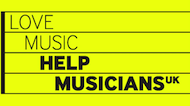
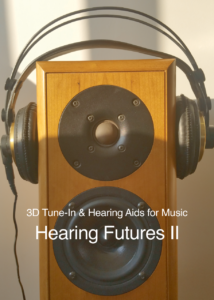
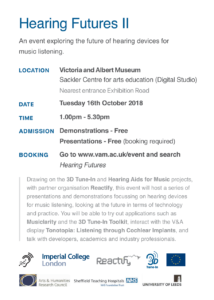
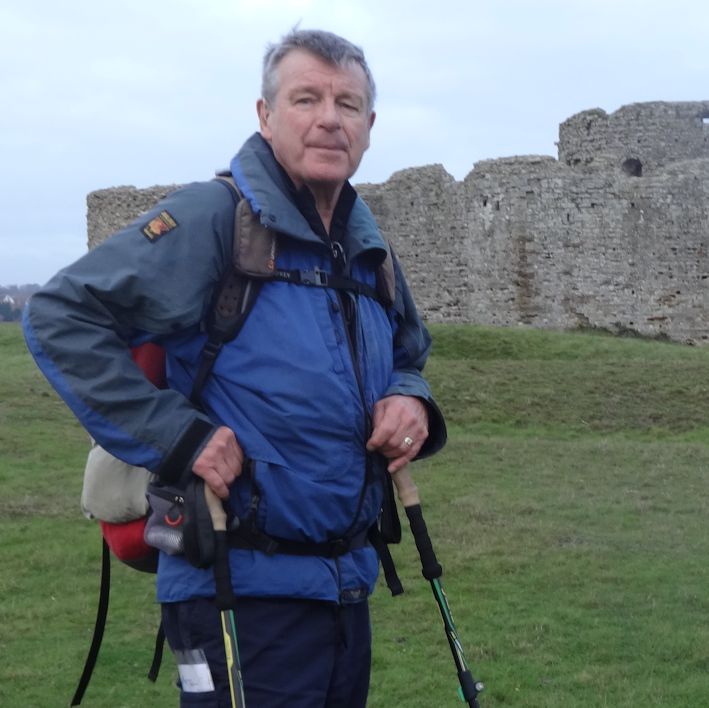
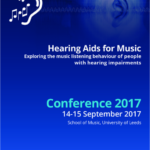
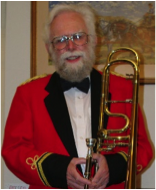 Despite being branded as tone deaf in schooldays, and suffering from moderate hearing loss too, seven years ago I started to play trombone. Now, aged 69, I play in a brass band. My wife, Carol, a lifelong musician who plays euphonium is afflicted with a severe hearing loss as well, a long term condition combined with severe tinnitus.
Despite being branded as tone deaf in schooldays, and suffering from moderate hearing loss too, seven years ago I started to play trombone. Now, aged 69, I play in a brass band. My wife, Carol, a lifelong musician who plays euphonium is afflicted with a severe hearing loss as well, a long term condition combined with severe tinnitus.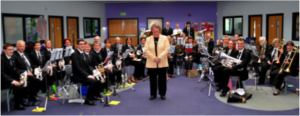 Players should be able to clearly hear neighbouring players, so as to be able to play in time and in tune with one another. They also need to hear other sections of the band to effect the overall tuning and timing of the music. As a trombone player, I need to be able to hear euphonium and baritone horns immediately in front, to perceive the higher pitched sounds of the cornets from the far side of the band, to be aware of the horns, all whilst not forgetting the basses (tubas) which are hard to ignore. And in rehearsal, it is important of course to hear the instructions from the conductor!
Players should be able to clearly hear neighbouring players, so as to be able to play in time and in tune with one another. They also need to hear other sections of the band to effect the overall tuning and timing of the music. As a trombone player, I need to be able to hear euphonium and baritone horns immediately in front, to perceive the higher pitched sounds of the cornets from the far side of the band, to be aware of the horns, all whilst not forgetting the basses (tubas) which are hard to ignore. And in rehearsal, it is important of course to hear the instructions from the conductor!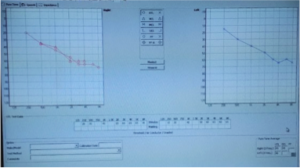 For me, playing without hearing aids is not a realistic option. With my high frequency loss, I am barely aware of the cornet sounds and much of the articulation is lost. The resultant dead and rather woolly musical environment, with no perception of commands from the conductor would preclude participation.
For me, playing without hearing aids is not a realistic option. With my high frequency loss, I am barely aware of the cornet sounds and much of the articulation is lost. The resultant dead and rather woolly musical environment, with no perception of commands from the conductor would preclude participation.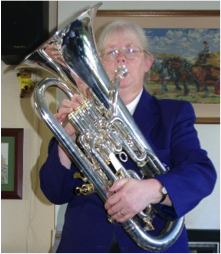 Carol uses two Phonak Nathos SP aids with features such as the frequency translation of higher pitched sounds, enabling her to comprehend some of those missing high frequency sounds. Early experience with these aids suggested that she had trouble precisely pitching and playing in tune and this was particularly evident if playing in a small ensemble. Fortunately, the enabling of a music program, disabling some features of the aids, made a dramatic difference and in the small ensemble she was able to play far more reliably in tune. However, in band a major problem unfolded whereby when playing her euphonium, especially when accompanied by a neighbouring euphonium, she could hear virtually nothing of the rest of the band. This problem intrigued me and I set about trying to find why the euphonium was so troublesome!
Carol uses two Phonak Nathos SP aids with features such as the frequency translation of higher pitched sounds, enabling her to comprehend some of those missing high frequency sounds. Early experience with these aids suggested that she had trouble precisely pitching and playing in tune and this was particularly evident if playing in a small ensemble. Fortunately, the enabling of a music program, disabling some features of the aids, made a dramatic difference and in the small ensemble she was able to play far more reliably in tune. However, in band a major problem unfolded whereby when playing her euphonium, especially when accompanied by a neighbouring euphonium, she could hear virtually nothing of the rest of the band. This problem intrigued me and I set about trying to find why the euphonium was so troublesome!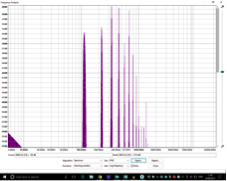 All brass instruments have characteristic spectral properties, whereby the fundamental of a note with a particular set of overtones gives the instrument its sound. The different instruments differ in size (from the tiny soprano cornet to the large B-flat tuba) and in construction with the size and degree of taper in the bore. The trombone is a parallel bore instrument, and this reflects in the sound which is rich in overtones – the FFT analysis here shows peaks extending to the 15th or even 20th harmonic of the note being played. Curiously, the trombone can seemingly be very light on the fundamental of the note being played. In contrast, the euphonium with its taper bore is very strong in the fundamental, with the overtones rapidly dying away. The similarly pitched baritone horn with a less tapered bore has a spectrum more like that of the trombone.
All brass instruments have characteristic spectral properties, whereby the fundamental of a note with a particular set of overtones gives the instrument its sound. The different instruments differ in size (from the tiny soprano cornet to the large B-flat tuba) and in construction with the size and degree of taper in the bore. The trombone is a parallel bore instrument, and this reflects in the sound which is rich in overtones – the FFT analysis here shows peaks extending to the 15th or even 20th harmonic of the note being played. Curiously, the trombone can seemingly be very light on the fundamental of the note being played. In contrast, the euphonium with its taper bore is very strong in the fundamental, with the overtones rapidly dying away. The similarly pitched baritone horn with a less tapered bore has a spectrum more like that of the trombone.